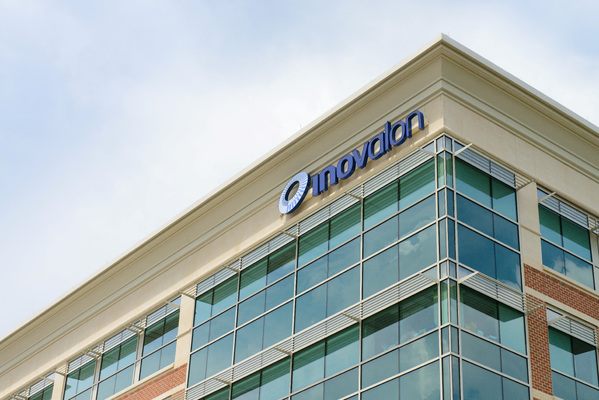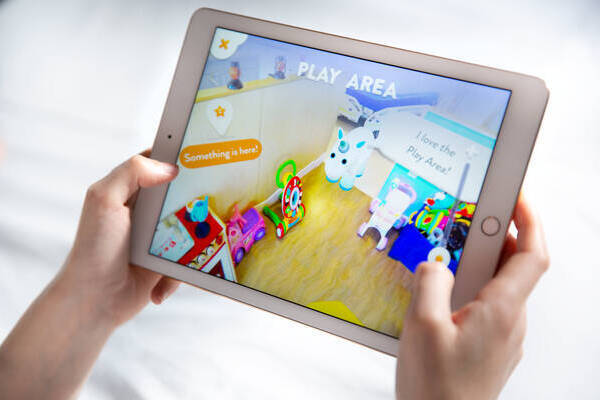Three ways to ensure no one gets left behind in digital care
Sponsored by Luscii HealthtechTechnology can free up space for the human side of care to be applied when it’s most needed. But to make the most of it, it needs to be designed with patients in mind

We were sitting at the kitchen table. My father sat hunched over his iPad. Whereas before he could operate anything without difficulty, now things were different. For me, it was easy. But weakened by his pancreatic cancer, he kept pressing the wrong buttons. I realised then how important it is that we do everything we possibly can to ensure digital care remains accessible.
Doubling down on an inclusive approach
Digital care is being deployed on an increasingly large scale. And while adapting to it may be straightforward for many people, there are groups for whom this is not the case. Perhaps they didn’t grow up with digital tools. Or they have an impairment, such as poor vision or a physical disability. Or they simply have no access to the internet or email.
For such groups, adjustments are needed. But even patients who were once handy with technology can lose those skills due to their illness. For them too, being able to use digital care is not a given.
At Luscii, we have a special phrase that is key to everything we do: “Leave no one behind”. Here, we reveal the three lessons we’ve learned from projects within the 11 countries across Europe and Africa where we now operate.
Lesson 1: Have a clear objective for your digital service
It is crucial that people with limited digital skills or low literacy are able to understand right away what a digital healthcare app is for. This enables seniors with chronic obstructive pulmonary disease (COPD), for example, to understand the purpose of tracking their vitals and communicating how they are feeling.
It should be equally straightforward for them to receive a message after submitting their measurements with advice about their medication or a video with inhaler instructions. And it would be even better if they could instantly access a timeline which displays their next consultation or expected measurement.
Patients participate in a virtual ward or remote patient monitoring service to avoid visiting the hospital or being admitted unnecessarily. But one consequence of this is that they need to be able to use remote services for this to be effective.
For this to happen, clarity and simplicity are key. Less is more – a simple app that provides the right functions at the right time is far easier for a patient to get to grips with. A system that provides clear actions and feedback for a patient, when they expect it – such as automated messages or the option to request a phone call with their care team if they have concerns – is far more valuable than something with dozens of functions and screens.
Lesson 2: App design and accessibility
But that’s not everything. You want as many patients as possible to be able to use your digital service. And to achieve that, it’s important to consider its design. Use colours with a sharp contrast. Make buttons and letters as large and obvious as possible. And pay attention to the text and icons in your app because they are crucial to a patient’s understanding of it. At Luscii, this is so important that we use specific team members to continuously work on this design aspect.
They are also specialists in accessibility, as this is built into iPads and iPhones. The clever use of these standard features in the Luscii application enables people with disabilities to participate in a virtual ward, too – even if they are blind, as the video of Remzi Akdogan below, who underwent a kidney transplant, demonstrates.
Lesson 3: Luscii in a Box
These approaches will all add up to a digital healthcare service that patients can access and appreciate with ease: it’s no coincidence that our app has received a patient rating of 4.6 stars.
But we’re not finished yet. In every country, there are still people without access to the internet or those who do not use email, for example. The latter we see in the parts of Africa where we are active, but also in poorer neighbourhoods in cities such as London.
To help these groups, we have introduced an SMS log-in feature, and developed Luscii in a Box together with Apple resellers. In addition to measuring devices, such as a connected blood pressure monitor, saturation or spirometer, hospitals in selected countries can now lend their patients a special iPad on which Luscii Remote Patient Monitoring is installed, which includes a 4G internet subscription. Everything the patient needs is delivered to their home, with explanations available if necessary. The cost of this is limited and can be paid for from the savings healthcare organisations achieve with remote patient monitoring – which, in conditions such as heart failure, can sometimes be reduced by up to 65 per cent.
Dr. Carla Plymen, Consultant Cardiologist at Imperial College Healthcare Trust presenting at the LMDC conference October 2022
Accept differences
These three lessons are a route to even the most vulnerable patients participating in remote care. But, as wonderful as that is, it’s still important to keep an eye out for situations where digital care is not the right choice.
Blended care, as we call it in the Netherlands, means you can set up quality, accessible digital care for most patients, but are still able to resort to physical care for those who can’t or don’t want to do digital – or when the situation calls for real human contact, as I saw with my father in his very last phase. It was comforting that, within that palliative setting, the doctor actually had time for him. And that was made possible thanks to the digital care for other patients whom he did not have to see at that moment.
Experience it yourself: want to see the three lessons in action? Try our demo apps here.
Prof. Dr. Daan Dohmen is CEO and founder of Luscii Healthtech, a global leader in remote monitoring and virtual ward services. He is a Professor of Digital Transformation in Healthcare at the Open University in the Netherlands. Daan is both a scientist and a serial entrepreneur and has appeared on the list of the ‘99 most influential decision-makers in the healthcare sector’ every year since 2016.

Business Reporter Team
Most Viewed
23-29 Hendon Lane, London, N3 1RT
23-29 Hendon Lane, London, N3 1RT
020 8349 4363
© 2024, Lyonsdown Limited. Business Reporter® is a registered trademark of Lyonsdown Ltd. VAT registration number: 830519543





